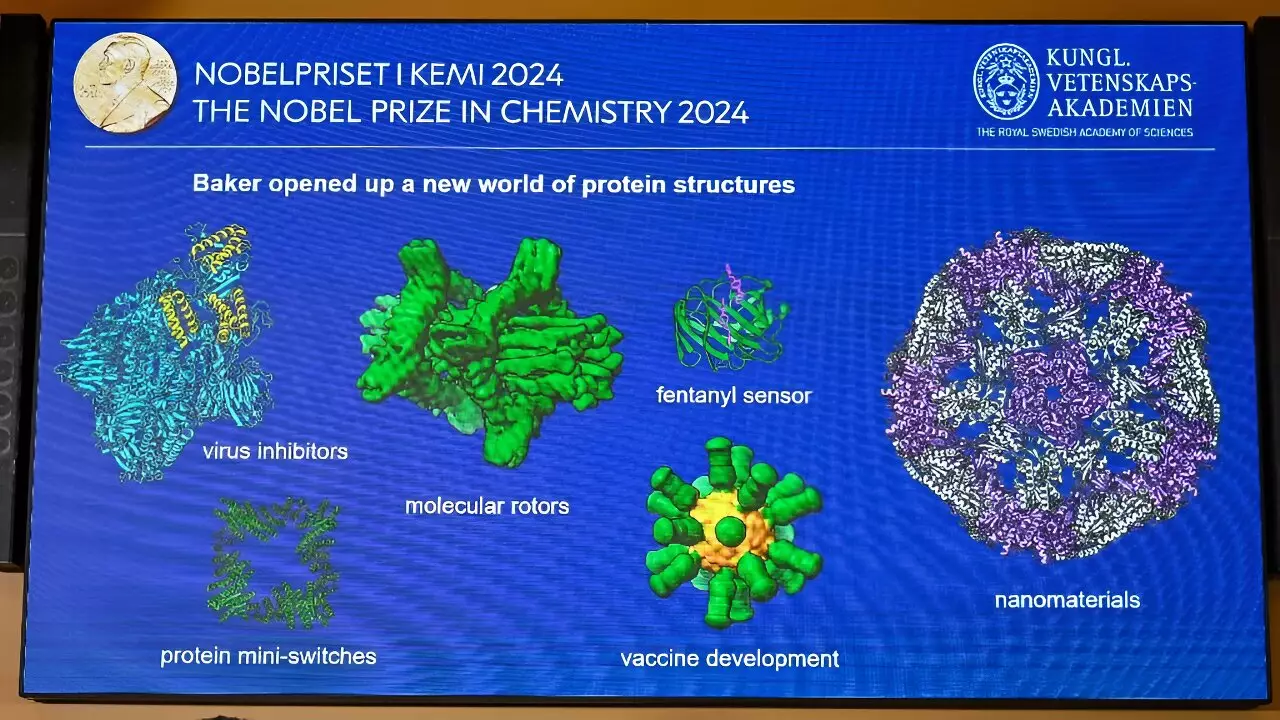On a notable Wednesday in October, the Nobel Prize in Chemistry was awarded to three pioneering scientists for their groundbreaking work in protein science. Demis Hassabis and John Jumper from Google’s DeepMind lab, along with biochemist David Baker, have made significant strides in deciphering the complex structure of proteins—arguably the building blocks of life. Their efforts promise tremendous implications for medical science, environmental sustainability, and more. This article explores the underlying science of their achievement, the implications of their work, and the transformative potential of their research.
Proteins are intricate molecular machines that facilitate virtually every function within living organisms. “Proteins are the factories of everything that happens in our body,” says Davide Calebiro, a researcher at the University of Birmingham. They are synthesized according to genetic instructions contained within DNA and serve vital roles ranging from muscle contraction to immune defense. Each protein is constructed from a unique sequence of 20 different amino acids—much like letters that form words in a language. The configuration of these amino acids dictates the intricate three-dimensional structures proteins adopt, which in turn enable their specific functions.
To truly grasp the mechanisms by which proteins operate, scientists must decode how linear sequences of amino acids morph into their complex 3D structures. Mary Carroll, president of the American Chemical Society, likened this transformation to an old telephone cord—stretch it out, and it resembles a one-dimensional line; let it go, and it springs back to its functional shape. However, this protein-folding phenomenon is not straightforward, as the journey from sequence to structure involves numerous variables and countless possibilities. Historically, predictions regarding protein structures had stymied chemists for decades, culminating in competitions like the “Protein Olympics,” where many participants struggled to accurately predict outcomes.
Revolutionizing Protein Folding with AI
The crux of Hassabis and Jumper’s contribution lies in their innovative deployment of artificial intelligence to demystify protein structures. With their model, AlphaFold, they harnessed the vast repository of known amino acid sequences and their corresponding structures to train the AI in recognizing patterns. When faced with unknown sequences, AlphaFold utilizes comparative analysis to reconstruct the likely 3D configuration, effectively decoding nature’s puzzle. Impressively, AlphaFold2 triumphed in the 2020 Protein Olympics, convincing creators of this competition that the challenge had been effectively solved. Today, it has predicted structures for virtually all known proteins, an impressive feat with profound implications.
In parallel to the predictive prowess of AlphaFold lies the innovative work of David Baker, who approaches the challenge of proteins from a different angle. Rather than deciphering existing structures, Baker’s methodology involves designing novel protein structures, previously unseen in nature. He employs a sophisticated computer program called Rosetta to derive the amino acid sequences necessary for producing these custom proteins. By analyzing known protein structures to find similar fragments, Rosetta crafts sequences that could fold into the desired structures. The potential applications of this customized protein engineering are vast, paving the way toward innovative drugs, vaccines, and environmentally sustainable materials.
Implications for Science and Society
Understanding and manipulating protein structures opens an array of applications that could redefine various sectors, from medicine to environmental science. As noted on the Nobel Prize website, this work lays the groundwork for improving our understanding of biological processes—including disease development and microbial interactions with plastics. Baker’s work alone could lead to the creation of new nanomaterials and targeted therapies that could revolutionize treatments for diseases like cancer and COVID-19. He expressed enthusiasm for designing protective proteins against pandemic-causing viruses, emphasizing the practical implications of their research on public health.
A New Era in Biotechnology
This Nobel win is not merely an acknowledgment of past accomplishments; it heralds the dawn of a new chapter in biotechnology. As Calebiro aptly pointed out, “I think this is just the beginning of a completely new era.” The methodologies developed by Hassabis, Jumper, and Baker could fundamentally alter our capacity to manipulate biological systems. With the ongoing advancements in technology and our deepening understanding of protein science, a future filled with potential innovations awaits, promising to empower humanity in ways previously thought to be the realm of science fiction.
The groundbreaking work that earned this year’s Nobel Prize in Chemistry stands as a testament to the fusion of artificial intelligence and biological research, charting an exciting path forward in the quest to understand life itself.


Leave a Reply